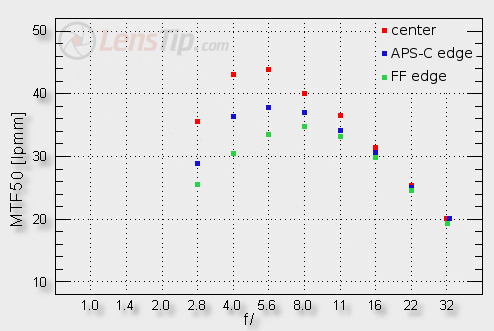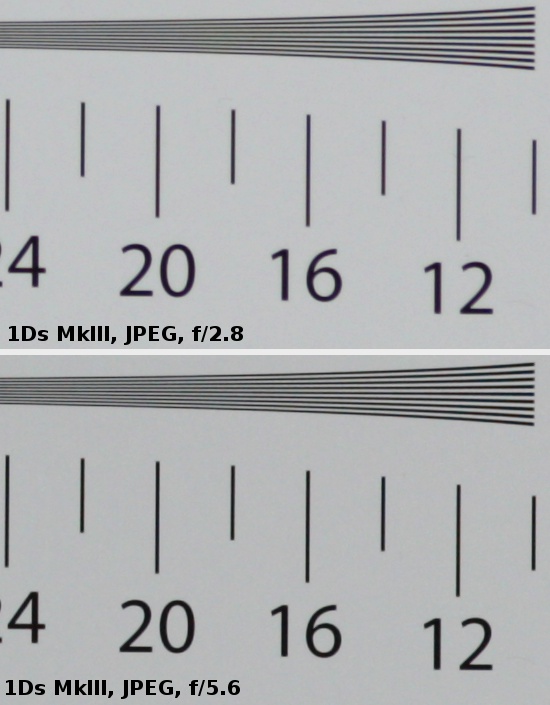Canon EF 200 mm f/2.8L II USM
4. Image resolution
Let’s glance at the graph below to assess how the tested lens fares in the frame centre, on the edge of the APS-C sensor and on the edge of full frame.

Please Support UsIf you enjoy our reviews and articles, and you want us to continue our work please, support our website by donating through PayPal. The funds are going to be used for paying our editorial team, renting servers, and equipping our testing studio; only that way we will be able to continue providing you interesting content for free. |
- - - - - - - - - - - - - - - - - - - - - - - - - - - - - - - - - - - - - - - - - - - - - - - -
It would be difficult to find any serious reason to complain. The performance in the frame centre definitely deserves nothing but praise. At the maximum relative aperture the lens reaches a result of 36 lpmm so the images it provides are of good quality. The problem is that the new 70-200 mm f/2.8 at the same combination of parameters had a result a bit over 40 lpmm. On stopping down to f/4.0 and f/5.6 the results start getting to 43-44 lpmm and it is a level which, within the margin of measurement error, is similar to that of the new 70-200 mm.
We can’t complain about the performance of the tested lens on the edge of the APS-C sensor either. By f/2.8 it brushes against the decency level and on stopping down the MTFs increase very swiftly to the level deemed as very good. Once again, though, the EF 70-200 mm f/2.8L IS USM II fares slightly better here. At the maximum relative aperture it exceeded slightly 30 lpmm and by f/5.6 it reached 37 lpmm.
The only reservation you can express about the very edge of full frame and the maximum relative aperture. The result of 26 lpmm is a bit below our expectations, especially that the 70-200 mm II showed here a value a bit over 28 lpmm. Fortunately on stopping down to f/4.0 the image becomes fully useful.
The results presented in this chapter are very instructive. A well-designed lens, even after fifteen years from its launch can still impress with its performance. On the other hand during that period the optics design has moved forward in leaps and bounds – a new, expensive zoom lens is now able to defeat an old, top-of-the-range ‘prime’. I am not sure whether Canon decides to present a third version of this lens. If it were launched, I would be very curious about its achievements. I must admit personally I doubt whether such a launch is going to happen in the near future because the only argument for it would be adding optical stabilization. The current version is complemented very well by the new 70-200 mm and the 2/200 instruments when it comes to the possibilities, dimensions and the price.
Below we present crops from photos of our biggest resolution testing chart taken from the middle of the frame.
 |






